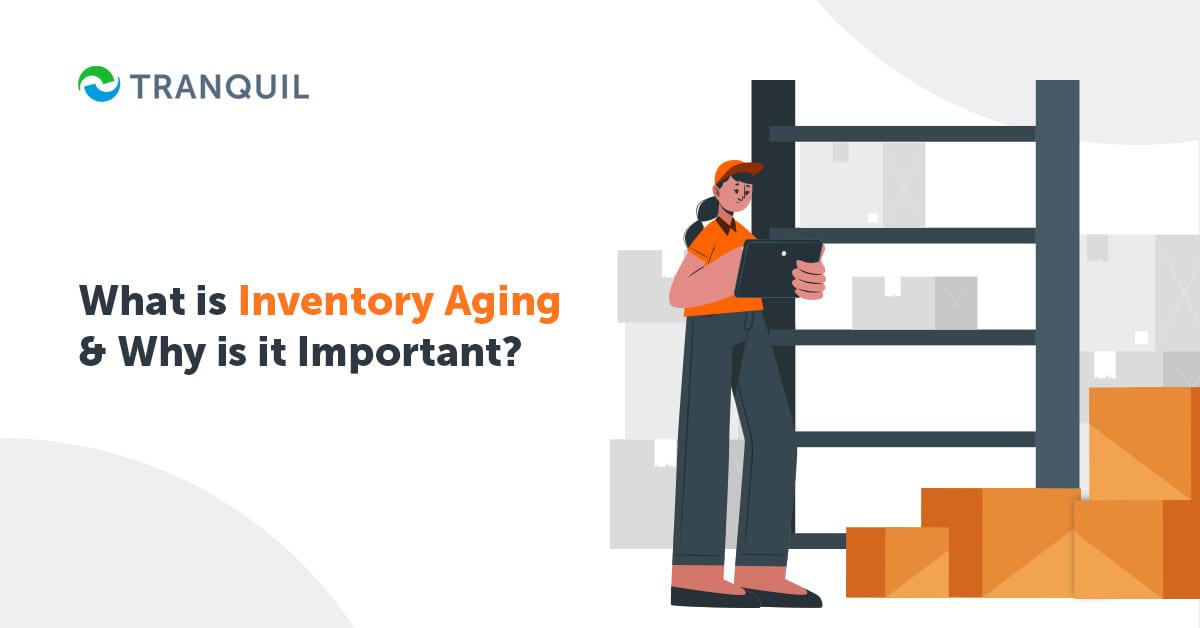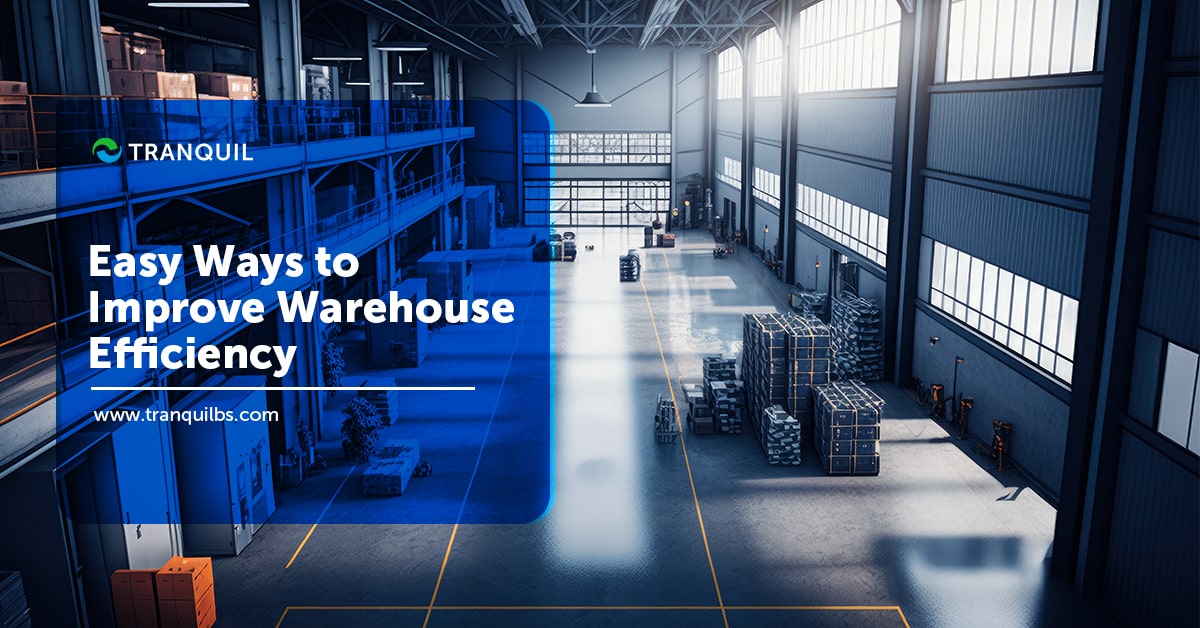
What is Inventory Aging and Why is it Important?
It’s a well-known fact that stock or inventory is the most crucial aspect for any business that deals in products.
They have to monitor their movement as well as their shelf life so that they don’t end up with excess stock or have stock-outs.
Carrying excess inventory results in heavy expenditure in the form of warehousing, labour handling, utilities, security, insurance, audits, and so on.
The business may also end up with dead stock – goods that sell slowly and eventually remain unsold due to reasons like obsolescence, or because they get damaged.
If you are short-stocked, you risk losing sales, and eventually, customers.
ALSO READ: Top 4 Benefits of Stock Status
Stock aging is one method that will help you store the requisite inventory stocks, removing those products which can hamper your profitability.
Keeping a tight control of aging inventory offers several benefits to businesses.
You can take speedy, informed decisions to boost the revenues and growth of your company.
The inventory aging report provides important KPIs regarding inventory status and the speed at which it moves.
In essence, it is a list of products on hand, categorized according to the time they have been in stock.
The book-keeper has to establish slow-moving or obsolete inventory which has to be revalued.
This helps to calculate the cost of goods sold precisely.
The stock aging report easily enables this process.
It offers information on the inventory to be bought, thereby helping to reduce the inventory storage cost.
Reports can be generated automatically when you have robust ERP software like Tranquil.
ALSO READ: What is an Inventory Control System?
Calculating the Average Inventory Age For your Business

Calculation of average inventory age is crucial for inventory management, as this points to our inefficiencies and lost profits.
To calculate the inventory age of your products, you must know the average cost of inventory, inventory turnover ratio (ITR), and cost of goods sold or COGS.
Average inventory cost formula: cost of goods sold in a year/closing inventory balance.
You need to have a clear understanding of these numbers as they can convey if the stock of goods you have in your warehouse is actually affecting your profitability negatively.
When you are clear about these figures, it can empower you to manage your inventory better.
ALSO READ: Common Inventory Management Problems and Solutions
Know the Cost of Goods Sold
This is nothing but the cost incurred to manufacture the products that you sell. It includes costs that can be directly linked to production, like raw materials, labour, commissions, fuel, electricity, and so on.
However, it does not take into consideration indirect expenses like administration expenses, marketing, software, etc.
COGS formula: Inventory opening balance + purchases made in the period – closing inventory balance = cost of goods sold.
Inventory opening balance refers to the quantity of inventory left from the previous period, which could be month, quarter, or year.
The closing inventory is what you have left, or did not get sold in that same time period.
Purchases made during the period is the cost of your purchases in that same period.
Know the Inventory Turnover Ratio
This ratio expresses how many times a business sells and replenishes its inventory in a specific time period, like a year, or a quarter, or even in a month.
When you calculate your inventory turnover, you will be better equipped to make the right decisions on not just purchasing inventory stocks, but also regarding production, marketing, and pricing as well.
ALSO READ: What is Zero Inventory?
Inventory Turnover Ratio formula: cost of goods sold / average inventory during the period.
A slow turnover rate could mean you have a huge stock of excess or slow-moving inventory, or that your sales are poor.
A high ratio is likely to mean you have excellent sales, or that your inventory levels are inadequate.
In any case, it is a critical tool of inventory management analysis.
The Next Step: Dividing by the Number of Days
The age of your inventory conveys how many days it takes for your business to sell certain products, on average.
Therefore, inventory aging analysis method is preferred by analysts to check how efficient the sales of a company is.
Days sales in Inventory or DSI is another term used for the average inventory age.
ALSO READ: ABC Analysis in Inventory Management
Know the Average Inventory Cost
The average cost of inventory basically refers to the quantity or value of the inventory of a company over a particular period of time.
Seasonality can cause inventory balances to fluctuate tremendously.
It depends on when shipments are received and so on.
When you calculate the average cost, it neutralizes the effect of these sudden spikes and slumps.
It also serves as a rational guide to the valuation of inventory.
Inventory Aging Formula
To determine the inventory age of the products in stock, use the formula:
The average age of inventory = (Average cost of inventory / Cost of Goods Sold) x 365.
We strongly recommend that as a retailer, you confirm this figure with gross profit margin or other inventory KPIs.
ALSO READ: How Can you Track Inventory UOM?
Why Stock Aging Analysis Is Crucial for Businesses

There are a number of reasons that the inventory aging report is important for businesses.
It identifies slow-moving and non-moving products.
It empowers your Purchase department with the information they require to make the right choices when it comes to ordering products; likewise, the manufacturing department is better equipped to decide what to produce, and how much to produce.
The stock aging report also provides insights into the extra cost incurred on products that stay in your inventory for a long time without getting sold.
ALSO READ: What is Inventory Reorder Point?
Let us look at all these causes in some detail to get a clearer picture.
- Inventory aging or the time duration of your products remaining in your inventory should be properly understood so that you can make a comparison with the benchmarks set by the industry – basically, your biggest competitors.
- Stock aging can be used for every type of inventory item.
- The stock aging analysis report helps you to know how quickly each inventory item moves, and the reason why certain items move slowly. Knowing which items are not quickly moving out of the inventory will help you in deciding what items to order in the future.
ALSO READ: Top Inventory Reduction Strategies
- The report can include the date of arrival of an inventory item along with information regarding the delivery schedule; this can help you immensely in concentrating on the items that take the longest time to move.
- Better decision-making with regard to timing and quantity of purchasing inventory or manufacturing
- Helps to sell off old or outdated stock at discounted prices
- You can establish costs related to quality maintenance, storage, etc. for the duration that you have the products in your inventory, and look at ways to reduce them to manageable levels.
- Enables businesses to evaluate and think about alternative methods for proper management of inventory to reduce inventory aging or time the products spend in your warehouse or store shelves.
ALSO READ: Importance and Calculation of Safety Stock
- Determine which products spend more time in your inventory and hence move slowly, and if you can rearrange the product mix for optimal results.
- Determine if the delivery systems of different vendors have an effect on the time the goods remain in warehouses as inventory – for example, requirements regarding volume and delivery schedules.
- Provides valuable insights into additional costs like electricity, security, insurance, and even taxes in some cases. These expenses are incurred to keep the products in a saleable condition. For example, produce needs to be refrigerated, certain medicines as well; high-value items may necessitate tight security, and so on. Having a lot of products in your inventory for a long time also restricts the space available in your inventory – you could have used the space to store your biggest-selling items. This is the element of opportunity cost you incur.
ALSO READ: What is Pipeline Inventory and Decoupling Inventory?
Useful for Investors
Further, Stock aging analysis insights allow entrepreneurs and managers to be able to predict certain events that are capable of impacting the organization.
Stakeholders like investors, and even potential investors closely watch business growth, and they are interested in learning how you manage your inventory as it’s a key component of good overall management, and impacts growth.
Improve Storage Cost Efficiency

Inventory carrying costs, or holding costs, are not likely to come down any time in the foreseeable future.
However, thanks to inventory aging analysis, you can avoid or reduce charges for long-term storage and improve cost efficiency significantly.
ALSO READ: Understocking Vs Overstocking in inventory?
Inventory aging reports offer details on the duration that products remain in inventory; this enables businesses to create strategies to sell them off.
This is especially useful for companies that use third-party logistics or FBA warehouses, as in both cases you need to pay a hefty fee if your products stay there for extended periods.
Optimize your Inventory Control Strategy
Supervising the supply, storing, managing, and distrusting of your stock of goods is at the core of inventory control.
Both warehouse management and inventory control involve methods that help avoid stockouts, selling products, not in hand, and delayed restocking schedules.
By adding inventory aging analysis in the mix, optimizing your inventory control strategy becomes a breeze.
A properly conducted inventory aging analysis helps you to understand precisely what is available in your stock, and provides the information that facilitates increased inventory turnover – like reduced obsolescence, spoilage, and expiry of products, and so on.
ALSO READ: What is Negative Inventory?
Minimize Excess Inventory
Products that are at the end of their life cycle but are still languishing on your warehouse racks because the projected demand was way higher than the actual, are referred to as excess stock or inventory.
There’s no two ways about the fact that it does not augur well for a business.
It reflects poorly on your inventory management skills and affects your revenue negatively as well.
By focusing on aging inventory, you can decide not to order or manufacture the slow and non-moving items, and come up with a plan to get rid of all dead stock.
You can also innovate and come up with new products that are capable of attracting customers.
Maximize your Cashflow

Every business looks to maximize its cashflow – after all, what is your business without good revenue?
You need cash to pay wages, utilities, vendors, and of course, take home some profit as well.
If you have put in a lot of cash to purchase goods that are moving like snails, you may be left with insufficient funds to purchase fresh and innovative products that are sure sellers.
Inventory aging calculations can help you pinpoint the items that incur high carrying costs as they remain in inventory for an extended time period.
This will help you to plan to dispose of this stock as quickly as possible.
ALSO READ: Importance of Stock Keeping Unit (SKU)
The importance of proper inventory management cannot be stressed enough, but you don’t have to stress yourself! Invest in Tranquil, the right ERP, and its feature-packed Inventory Management module will do the work for you. Do schedule a demo at your convenience, and we’ll happily explain how it works.



